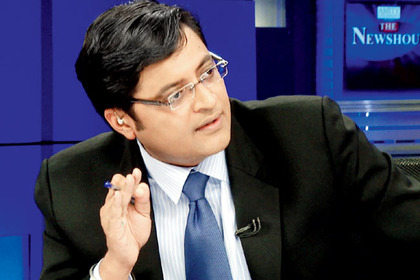Mysuru, Mar 13: A state-of-the-art viral research laboratory in the city has been identified as one of the testing laboratories for the detection of COVID-19, official sources said here on Friday.
The samples of suspected cases could be sent to the lab for analysis and it would take about three hours to get the results.
The Viral Research and Diagnostic Laboratory (VRDL), which was set up from Central grants and functions at the Microbiology Department of K.R. Hospital, has been authorised to carry out the tests. This lab in Mysuru is among the 52-plus laboratories in the country.
Though the VRDL is equipped to carry out the tests, the sole authority of confirming the virus lies with the Indian Council of Medical Research (ICMR)-National Institute of Virology (NIV) in Pune. VRDL is also the sole agency for collection and transportation of suspected samples of COVID-19 to NIV.
VRDL, which is part of the Mysore Medical College and Research Institute, functions on the advice of NIV.
According to the guidelines issued by ICMR, the results of the tests done here have to be shared with NIV the same day and the labs are not supposed to disclose the results since the NIV is the only authority to declare positive cases. Also, confirmation from the NIV should be awaited in case the samples test negative for COVID-19. The ICMR, in the guidelines made available on its website, has advised clinicians at labs to isolate the patient tested positive for COVID-19 in the identified facility and follow bio-safety precautions.
VRDL is a part of a network of labs established by the Department of Health Research, Government of India. The rise in the number of viral outbreaks and the resultant mortality had been cited as key reasons for the launch of network of such hi-tech labs in the country.
The NIV and the National Centre for Disease Control, Delhi, are the top laboratories for the network, while the National Institute of Epidemiology, Chennai, is the supervising authority for the data generated by the network of labs, sources added.
 New Delhi, Nov 1: Popular television journalist Arnab Goswami has reportedly resigned as the Editor-in Chief of Times Now. Arnab was not seen on his prime time show The Newshour in couple of days.
New Delhi, Nov 1: Popular television journalist Arnab Goswami has reportedly resigned as the Editor-in Chief of Times Now. Arnab was not seen on his prime time show The Newshour in couple of days.




Comments
He earned lot of money through spreading false news. After getting lot of money. now he decided to start his own to suck BJP.
I think the center has given him the cooked story to prepare himself before the Bhopal fake encounter case to bohw bohw on the news-hour....thats y he resigns it seems....now he knows the real fact of the feku......Allah will give him Hidaya...
Who ever speaks for Mr .Modi will get XYZ Security. Soon Anupum Kher will also get same facility.Ordinary People work hard and pay TAX. But our Modi Govt uses for all these useless people's Security.
India is Growing India is Shining.
LET HIM GO... WHO WANTS TO KNOW THE REASON... I DON'T.... AND PLZ TAKE AWAY HIS GOVT SECURITY... DONT WASTE OUR TAX MONEY ON SUCH PEOPLE ..............
Finally coward has resigned. Great news for our country's peace and prosperity.
Surely his bad time is nearing, AWASANA KALADALLY VIPAREETA BUDDI
He will start reading news in Khaki chaddi now
Definitely some thing worst expected from this fellow. Might be joined with some anti nation communal group. Other than that nothing nation will expect.
God save our media and the nation.
Jai Hind
Wasting Tax payers money on useless reporter's security.
He will start new channel. RSS now
He will start Patanjali Times with Baba Ramdev.
He is going to make a new news channel with Modi ....Fakes Now.....
Or next Modis spokesperson.....sure....
May be he read the QURAN and understood the REALITY on how EVILs in this world trap people by spilling out venom & by twisting the real FACT.
Arnab goswami where are. You? Nation is worried
When are you coming back
Arnab please come back soon... People are asking \itna sannata kyu hai bhai!!!\". I have not been able to focus at work, getting irritated quickly, not able to eat my dinner, getting sleepless nights.., please come back and tell the nation that you are not dumping all of us!!!
Your viewer from New York!"
MOHAN BHAGAT IS WAITING WITH HIS ARMS OPEN.
Thank god... Finally an end to noise pollution, after Diwali.
Peaceful new year ahead
thank God. Now Indian Journalism is saved from disaster . Work of journalist is to preach truth not to bark and fire in air
The viewers will miss his famous style of questioning the guest panelists: THE NATION WANTS TO KNOW!!!!!!!!
We miss your News hour . Waiting to see you launch a global channel.
He will start a new channel: Name will be TIMES BOW WOW
Crazy man!
Modi would take him in his cabinet.....cant say....\Birds of feather flock together\""
Add new comment